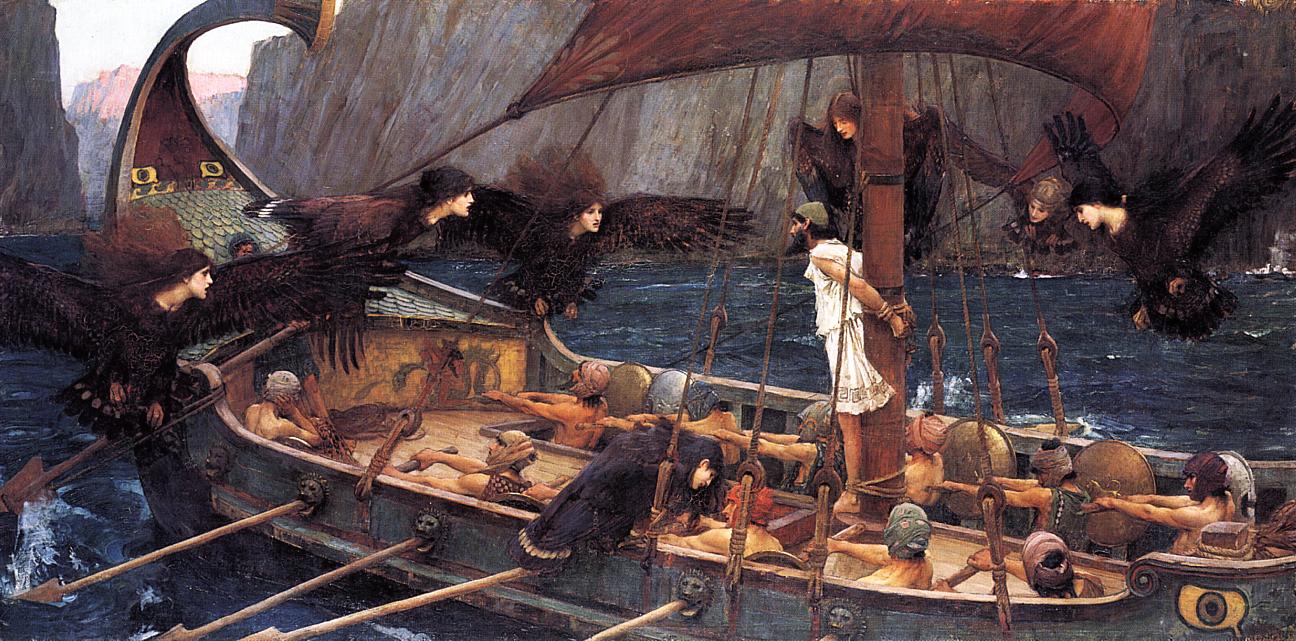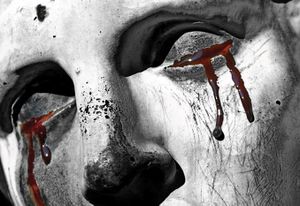Writing on World Literature: Difference between revisions
From Gerald R. Lucas
m (Tweaks.) |
m (Added shortcut.) |
||
| Line 1: | Line 1: | ||
{{Template:Writing-top|This=5}} | {{Template:Writing-top|This=5}} | ||
<div class="res-img">[[File:John William Waterhouse - Ulysses and the Sirens (1891).jpg|John William Waterhouse, ''Ulysses and the Sirens'' (1891)]]</div> | <div class="res-img">[[File:John William Waterhouse - Ulysses and the Sirens (1891).jpg|John William Waterhouse, ''Ulysses and the Sirens'' (1891)]]</div> | ||
{{Shortcut|SG:WL}} | |||
The following are introductions and background to texts I teach regularly in [[:Category:ENGL 2111|ENGL 2111]] and [[:Category:ENGL 2112|ENGL 2112]]. Many links within the essays go to Wikipedia. | The following are introductions and background to texts I teach regularly in [[:Category:ENGL 2111|ENGL 2111]] and [[:Category:ENGL 2112|ENGL 2112]]. Many links within the essays go to Wikipedia. | ||
Revision as of 14:49, 22 July 2020
The following are introductions and background to texts I teach regularly in ENGL 2111 and ENGL 2112. Many links within the essays go to Wikipedia.
Epic Poetry
Background
- Epic Poetry
- The Epic Hero
- On the Primary and Secondary Epics
- What Is an Epic?
- Our Hero
- The Heroic Ideal
Gilgamesh
- “Introduction to Gilgamesh”
- “The Humanizing of Enkidu”
- “Ecological Themes in Gilgamesh”
- “Friendship and Two Epics”
- “The Taming of Nature in Gilgamesh”
- Gilgamesh Study Guide
Homer
Iliad
- “Homer’s Iliad”
- “Fighting Beyond Fate”
- “Friendship and Two Epics”
- “Hector's Choice”
- “O My Rider”
- Iliad Study Guide
Odyssey
Virgil
Ovid
Tragedy
See Tragedy Overview.
Sophocles
- “Character v. Fate in Oedipus Rex.” July 10, 2003.
- OR Study Guide
Euripides
Sample Exam Questions
Also see questions under each study guide above.
- Gilgamesh and the Homeric epics are concerned with periods of expansion: i.e., when peoples are struggling to build their nations, both literally and ideologically. Discuss similarities in these three works in what seems to be necessary in building a strong nation and national identity.
- Discuss and illustrate the theme of hospitality and its importance to the social structure in the Odyssey.
- Discuss the implications of Odysseus as narrator in Book 9-12 of the Odyssey.
- In the Poetics, Aristotle cites Oedipus the King as exemplifying the best of tragedy. Discuss how Oedipus the King defines and illustrates what we know as tragedy.
- Many have called Euripides an “iconoclast,” not in a literal sense, but suggesting that his work seems to break the conservative icons of his society; for example: tradition, hierarchy, belief, etc. Examine his iconoclasm citing specific instances from Medea.
- Scholars frequently define an Ovidian concept of love as one that lives “close to the flesh,” suggesting that love in Ovid’s work is really just lust or desire. Discuss the implications of this view on those who love and those who are loved in at least three tales from The Metamorphoses.


